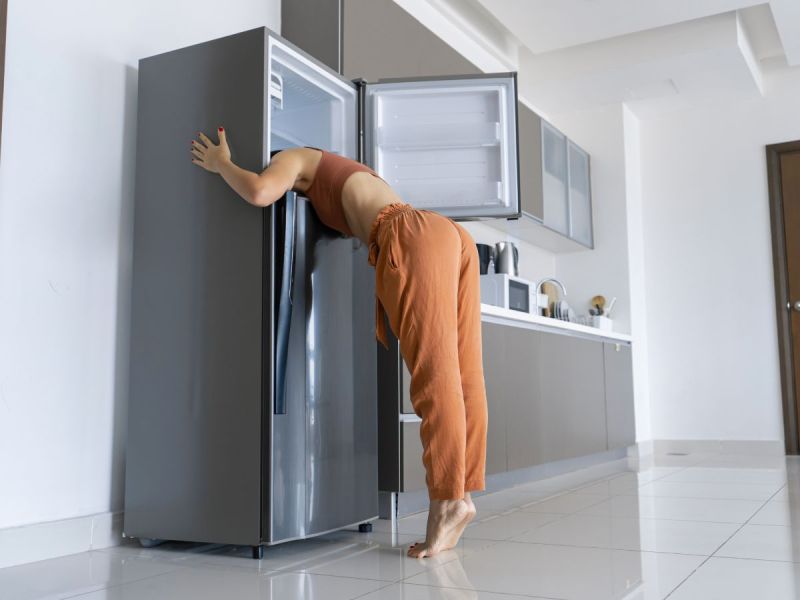An inability to get to sleep isn’t just a nighttime nuisance, it can also have disastrous consequences on our mental and physical health, from an increased risk of obesity, cardiovascular disease, and high blood pressure to a higher likelihood of depression. If you’re a woman, these risks become even greater.
Videos by Suggest
While there are many reasons why someone might suffer from inadequate sleep, the hormonal changes women experience during perimenopause and menopause are significant culprits. Who wouldn’t have trouble sleeping when your body suddenly feels like a furnace at 3 am?
Considering how important proper sleep is to maintain all facets of our health, it’s essential we find adequate solutions to help us get snoozing faster. That’s where psychologist Dr. Aric Prather’s new book, The Sleep Prescription, can help.
Old School Sleep Solutions
Trouble sleeping is nothing new, and there are multiple tips, tricks, and techniques available on the market. Some people take OTC melatonin or melatonin-like supplements. The “State of Sleep in America” report by Gallup and Casper (yes, the mattress company) surveyed more than 3,000 respondents in 2022 and found that 8% of adults use a prescription sleep aid, and women are 42% more likely to have trouble falling asleep than men.
Others prefer non-medicinal methods like using pink noise machines or choosing to sleep in separate rooms from their partner. (The latter is a technique often used by the royal family.) Still, these solutions don’t work for everyone. That’s why Prather developed a seven-day “sleep prescription” to reset your internal clock for deeper, more restorative sleep.
Prather’s sleep solutions involve a wide range of non-medicinal practices and techniques, including rewatching your favorite comfort shows, moving in the middle of the night, and even sticking your head in the freezer.
Can’t Skip Screen Time? Choose A Comfort Show
It’s no secret that the blue light of our smartphones and other devices negatively affects our sleep cycle. Still, that doesn’t change the fact that many of us sleep better when we can fall asleep to something on our TVs or laptops. If you can’t resist a bit of late-night screen time, Prather recommends opting for a comfort show you’ve rewatched several times.
Thrillers and mysteries encourage us to stay up later as our minds and bodies react to the fear and suspense. Watching a new show we’ve never seen before can also cause us to stay up late, as we want to be able to watch what happens next. That’s why Prather recommends choosing a calming show or movie—preferably one you’ve already rewatched several times before so your brain can tune out and switch to sleep mode more easily.
Move, Even If It’s The Middle Of The Night
We often associate sleepless nights with tossing and turning in bed, staring at the ceiling. However, Prather encourages individuals to give themselves 20 minutes to try and fall asleep. If they can’t do so in that amount of time, then he recommends switching spots.
Head to the living room to do something quiet, like reading, knitting, or meditating. Ideally, you want to associate laying in bed with sleeping only—not struggling to sleep. If your body gets used to feeling restless in bed, then it will be even harder to fall asleep in this position. Once you get sleepy again, then you can return to the bedroom.
Turn The Lights And Temperature Down
As all perimenopausal women can attest, sleeping in high temperatures is next to impossible. This is because the ideal sleeping environment is dark and cool, prompting our body’s core temperature to drop as it naturally does during sleep.
Prather recommends investing in blackout curtains or a high-quality sleep mask to block out any unwanted light while you sleep. Don’t underestimate the power of a nightlight, bright electronic light, or other rogue light sources to disturb your slumber. Moreover, setting your thermostat between 60 and 68 degrees can create the cool environment you need for deep sleep.
RELATED: Stop The Night Sweats With These Genius Products That Help You Stay Cool While You Sleep
Stick Your Head In The Freezer
As tempting as it might be to reach for some extra caffeine during an afternoon slump, that 4 pm latte will still be in your system when you try to fall asleep later that night. Thus, Prather advises against caffeine intake and recommends finding an extra energy boost elsewhere.
This can come in many forms: a brisk walk, focusing on a non-work task for around ten minutes, or even sticking your head in the freezer. Prather says the brief shock of cold activates the body’s arousal system, reinvigorating your brain sans Starbucks run.
Other solutions include decluttering your bedroom, giving your brain adequate time to shut down and go into “sleep mode,” and carving out time for scheduled worry.
Finding a better sleep routine is an easy way to simultaneously improve your mental and physical well-being. And with the help of Prather’s book, a restful night of sleep is only seven steps away.
